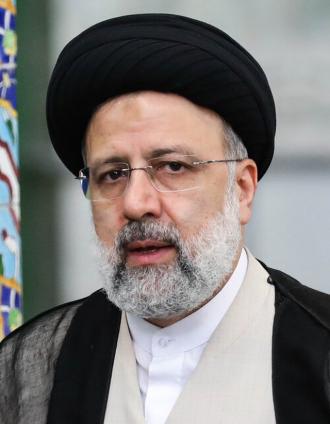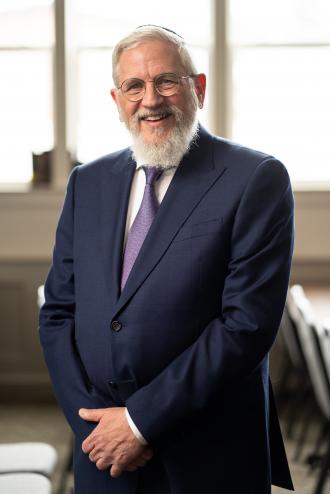In reward for his courageous act, Pinchas is promised by G-d that He will give him ‘His covenant of peace’.
The word used for peace is שלום. The Talmud reveals that there is a tradition that the third letter in this word, ו, should be written קטועה, ‘fragmented’. Some understand this to mean it should be written as a regular ‘vav’ though segmented with a gap in its leg. Others say it is written as a small letter ‘vav’, almost looking like a י, ‘yud’. This is the only instance in all of Torah where this unusual letter appears this way.
Instead of the word reading simply as שלום, it now reads as if the word were שלים, due to either the miniature vav that looks like a yud, or to the top half of the segmented vav which seems like a yud as well. The word שלים is the Aramaic word the Targum uses to translate the Hebrew word תמים, unblemished. This comes to teach us, the Talmud states, that Kohanim must be unblemished in order for their service to qualify in the Temple. Alternately this word שלים which is numerically equivalent to 380 alludes to the total number of descendants of Pinchas who all served in the Temple, 80 during the first and the other 300 during the second one.
According to these interpretations, although the word is meant to be read as שלום, peace, there is an added dimension in this letter being ‘fragmented’, to add emphasis to the worthiness of Pinchas and his newfound role as an ‘eternal Kohen’ whose progeny would attain ‘unblemished’ perfection and be privileged to serve in the two Temples.
The Baal HaTurim however sees a deficiency in this ‘fragmented’ vav.
There is a tradition that Pinchas is none other than Eliyahu HaNavi, Elijah the Prophet, the one who is entrusted with heralding the coming of the Moshiach and the Final Redemption. There are five places where the name אליהו is written as אליה absent the vav. There is an equal number of instances where the name יעקב, our Patriarch Jacob, is written with an added vav, יעקוב. This underscores the agreement, the Midrash informs, that Yaakov made with Eliyahu to take the letter vav as ‘collateral’ until such time as his children will return from their exiles at the behest of Eliyahu and the Moshiach when Yaakov will then return it to Eliyahu.
How is this relevant to the episode at hand? Why is this indicated at this juncture?
What is the significance of the letter vav specifically that it was taken ‘hostage’ until Eliyahu fulfills his mission?
•
The Midrash observes that the last letter in Esav’s name עשו, is the letter vav. His name literally means done and complete. The numerical value of his name is in fact שלום, peace, and he boasts of this wholesome implication within his name and character. But in truth it is a fallacy and it doesn’t belong there. His name without the vav is merely עש, which is a moth that destroys garments and is used as metaphor by the Prophet Yeshayahu for the ultimate eradication of evil, where he describes that time as: הן כלם כבגד יבלו עש יאכלם (ישעיהו נ ט), they all shall wax old as a garment, the moth shall eat them up. Its rightful role is to fortify the name of יעקוב, Yaakov.
A battle wages, at times Esav possesses the vav and at times Yaakov. The Prophet foretold that there will always be a tug of war between these two nations, אמלאה החרבה (יחזקאל כו ב), I shall be filled with her that is laid waste, when one is filled the other lays desolate. The ‘fill’ here refers to the vav, when one has it the other remains bereft of it.
What does this mystical vav represent and what are they fighting about?
•
In the world of the study of human psychology there is much discussion regarding man’s instinctive need for connection. Beyond the practical motivation of man to interact socially to advance one’s interests and personal needs, there seems to be a primal urge to simply connect. Some even blame it on hormones that allegedly compel us to bond with each other.
But deep down within our soul what truly prods us to connect is our soul’s search for G-d. G-d after all is the unifying factor in all of creation. Man is ‘wired’ indeed to discover that force which bonds us all; G-d.
•
The letter vav is the letter of חיבור, connection. When a vav is added at the beginning of a word it indicates a attachment to that which preceded it.
The very first debut of this ‘letter of connection’ is during creation where the Torah describes how in the beginning G-d created את השמים ואת הארץ, the heavens and the earth.
From its inception this invisible pull towards ‘heaven’ is factored into creation. Everything that follows, points in that direction.
But man refuses to easily accept that notion, for if everything leads heavenward then it must come with responsibility and obligations.
The Zohar talks about the Sitra Acher, the ‘other side’, the forces of evil, that begin with ‘chibur’, connection, but end with ‘pirud’, division, as opposed to the Sitra DeKedushah, the ‘side of holiness’, that begins with ‘pirud’, division, and ends with ‘chibur’, connection.
In the world of Esav there is a desperate need for connection accompanied by an equal measure of revulsion for responsibility. One who merely seeks to placate a hormonal drive will resort to indulgence, promotion of self, coercion and demand for allegiance in creating that ‘bond’ that one misguidedly craves for. That quest for ‘chibur’, ‘connection’ will result in ‘pirud’, horrible ‘division’.
When one’s journey, however, is motivated by a desire to refine and define oneself by discovering one’s talents and strengths by which one can contribute to the greater benefit of society connecting to that supra power, G-d and His Torah, which drives the world towards the one common goal of broadening the ‘Honor of Heaven’, that is when ‘pirud’, ‘self-discovery’, will bring about an inspired and genuine ‘chibur’, ‘connection’.
•
There was once a Caesar who hated the Jews. He asked his advisers, “If someone has dead flesh in his foot, should he cut it off and become healed or should he leave it and suffer?” They answered him, “He should cut it off and become healed.” (He was referring to the Jewish people in his empire, whom he saw as a constant source of frustration.) Ketia bar Shalom, one of the advisers, then interjected, “Firstly,” he said, “you will never be able to kill all of them, for they are dispersed throughout the four corners of the world ... and they are as important for the continued existence of the world as the winds. Furthermore, if you execute all the Jews of your kingdom, your reign will go down in history as a bloody one! The king responded, “You have argued persuasively. However, there is a rule that whoever outwits the king must be put to death. As they were taking Ketia away, a Roman matron called out, “Woe to the ship that travels without paying its dues!” Ketia immediately circumcised himself, exclaiming, “I have paid my dues - now I may pass through [the Gates of the World to Come] freely!” As they were throwing him to his death he cried out, “All my property is granted to Rebbi Akiva and his colleagues!” A heavenly voice was heard saying, “Ketia bar Shalom is destined for the Hereafter!” (ע"ז י:)
The Talmud tells us that this קטיעה בר שלום, literally translated as ‘fragmented the son of peace’, was a Roman officer a citizen of the nation Edom, a descendant of Esav.
‘Ketia’ finds himself a victim of a society that can’t see beyond its selfish needs. Edom refuses to acknowledge the greatness inherent within the Nation of Israel. Rather than questing for inspiration, it would rather cut off its own foot if it interferes with its comfortable existence.
But Ketia ‘gets it’, revealing before the Caesar the contributions this nation has offered and continues to provide to a world that can’t exist without its presence.
In a reflection of their corrupted notion of a forced ‘connectivity’, one who successfully challenges its leader must be put to death lest it engender free, healthy and purposeful thought that may ‘Heaven forbid’ prod them towards duty.
He submits himself to martyrdom declaring his allegiance by ‘connecting’ to the source of all life, ascending heavenward up that ladder G-d proffered from the very first moment of existence.
•
The Sefarim HaKedoshim reveal that Zimri’s association with the Midianite princess wasn’t driven simply by an animalistic urge. He sought to bring about an alliance with the nations of the world that would promote the coming of the Moshiach and bring the world to its ultimate fruition. But it was premature and not purely motivated. Pinchas chose daringly to divide himself from their ‘noble’ but misguided mission. It was that ‘division’ that brought us back from the brink, re-connecting us once again to the true source of all ‘connection’.
The Vav Ketua, the fragmented vav, represents this fine line in not being deluded into pursuing the noble quest for connection before first defining clearly the goal and its clear purpose.
The segmented vav indicates first שלים, personal שלימות, integrity, that must guide our drive towards connection.
The ‘Holy Roman’, Ketia bar Shalom, was perhaps thus named because in a moment of inspired consciousness he fathomed the depths of our heroic desire to cling to the source of all life.
•
The world of technology we live in provides us with unprecedented connectivity. There is an powerful compulsion to access this easy path towards artificial connection. But as we all observe this journey too often creates terrible pirud, division.
Are we ready to define ourselves? Are we ready to shackle our energies towards bettering the world by promoting G-d’s will, stifling our own self-serving promotion?
There is nothing more exciting, or more rewarding than the discovery of that deep connection we have with the Creator.
The letter of connection, vav, is expressed as וָו, two distinct single lines disconnected.
In order to ‘connect’ we must first be willing to stand alone deciding who we really are and what values we truly stand for. If that is our starting point we are assured we will be lovingly embraced in that most exquisite of connections, Dveikus BaHashem, cleaving to G-d.
באהבה,
צבי טייכמאן















